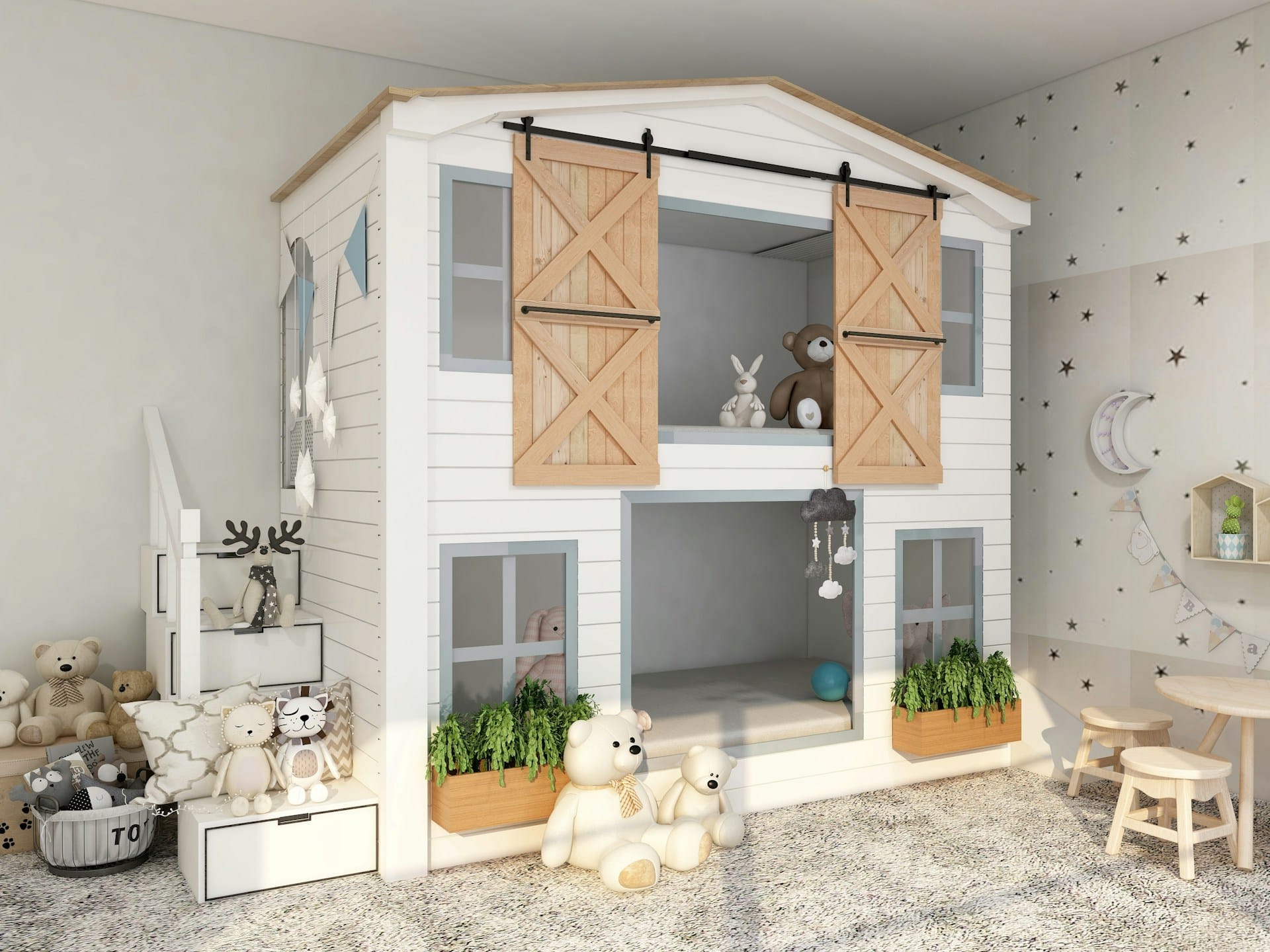How to Choose Eco-Friendly Paints for a Child’s Playroom?

From nurseries to playrooms, the spaces our children inhabit have a profound impact on their development and well-being. One of the most critical components to consider during room preparation is the choice of paint. Not only does it establish the room’s atmosphere and aesthetic appeal, but it can also affect your child’s health and safety. Therefore, selecting an eco-friendly paint becomes necessary. In addition to being safe for your children, eco paints are kind to the environment too. This article will guide you on how to choose eco-friendly paints for a child’s playroom, focusing on the aspects of color selection, toys, furniture, and wall painting techniques.
Selecting the Right Colors
Colors can influence children’s moods, behaviors, and even their development. Therefore, selecting the right colors for a child’s playroom is crucial. Eco-friendly paints come in a wide range of colors, but which one should you choose?
A lire en complément : What Are the Best Practices for Installing a Skylight in a Low-Slope Roof?
Blue and green hues are popular choices for children’s rooms. Blue, often associated with calm and serenity, is a perfect choice for a peaceful playroom atmosphere. It’s a color often linked to cognitive development, improved concentration, and restful sleep – all essential for growing children.
On the other hand, green, a color often linked to nature, promotes tranquility and health. It’s believed to improve reading speed and comprehension, making it a superb choice for a child’s playroom, especially if your child is at the reading age.
Cela peut vous intéresser : What’s the Best Way to Create a Zen Meditation Area in a Busy Home?
Considering Toys and Furniture
Toys and furniture influence the overall aesthetic of the playroom. Opting for wood toys and furniture not only complements the eco-friendly paint but also contributes to a healthier environment for your child. Wooden toys are durable, biodegradable, and safe for kids, while wooden furniture adds a touch of warmth and elegance to the room.
When painting wooden toys or furniture, ensure you use non-toxic, child-safe paints. These paints are free from harmful chemicals and heavy metals, reducing the risk of health hazards if your child chews or sucks on their toys.
The Importance of Paint Quality
Not all eco-friendly paints are created equal. It’s essential to look for paints that are not only safe for your child but also of good quality. Good quality paint will adhere better to the walls, last longer, and provide a more professional finish.
Opt for paints that are low or zero VOC (volatile organic compounds). These compounds, often found in traditional paints, can cause respiratory problems, headaches, and other health issues. Eco-friendly paints with low or zero VOCs are much safer for your child’s playroom.
When painting the room, be mindful of the application process. Ensure there’s proper ventilation to allow any paint fumes to dissipate. If possible, keep your child out of the room until the paint has fully dried.
Incorporating the Child’s Preferences
Involving your child in the process of choosing the colors and themes can make the playroom more personal and enjoyable for them. Children as young as two years old can identify their favorite colors. Ask your child about their preferences, show them color samples, and let them have a say.
Remember that the playroom is a space for your child, not just a room in your house. The colors and themes should excite and inspire them. They should feel safe, relaxed, and free to explore their creativity in their playroom.
Choosing eco-friendly paints for your child’s playroom can seem overwhelming. But by considering the color impact, the quality of the paint, the furniture and toys, and your child’s preferences, you can create an inviting, engaging, and safe environment for your children. By doing so, you are not only investing in your child’s well-being but also contributing to conserving our planet.
Assessing Different Paint Brands and Types
While embarking on your eco-friendly paint shopping journey, you’ll encounter several types and brands of paints. These include water-based paints, milk paint, Benjamin Moore, and other eco-friendly options. Each of these paints carries its unique traits, making it crucial to understand their differences before making a choice.
Water-based paints, also known as latex paints, are a popular eco-friendly option. They are low in VOCs, easy to apply, and have a quick drying time. Plus, they resist yellowing and are available in a variety of paint finishes, including semi-gloss and satin.
Another eco-friendly option is milk paint. Made from natural ingredients like milk protein, lime, and clay, milk paint is biodegradable, non-toxic, and virtually odorless. It’s perfect for creating a vintage or distressed look on wooden toys and furniture.
Benjamin Moore is a paint brand well known for its eco-friendly options. Their Natura line is a zero-VOC paint, free from harsh fumes and harmful chemicals. This brand ensures high-quality, durable paint colors that are not only safe for children rooms but also provide an excellent finish.
To ensure safety, look for paints with the Green Seal GS-11 or Green Guard certification. These certifications guarantee that the paint is low in VOCs and other harmful substances, making it safe for your child playroom.
Choosing the Right Paint for the Floor
The floor paint is another key aspect to consider when setting up a child’s playroom. Children often play on the floor, therefore the paint used needs to be safe, durable, and easy to clean.
Water-based paints are a solid option for floor painting. They are tough, resistant to wear and tear, and can withstand the rough and tumble of energetic play. Additionally, they are easy to clean, making them an excellent choice for high-traffic areas like playrooms.
For a more natural approach, consider using oil-based paint. Oil-based paints, particularly those made from linseed oil, are non-toxic and eco-friendly. They provide a robust and beautiful finish, but they do take longer to dry compared to water-based paints.
Remember, the safety and health of your child is paramount. It’s always best to use low VOC paint for your child playroom floors. Low VOC paint doesn’t emit harmful fumes and is safer for both your child and the environment.
Conclusion
Creating a vibrant, safe, and eco-friendly playroom for your child requires careful thought and planning. The choice of paint plays a significant role in this process. By opting for low VOC, water-based, or milk-based paints, you can ensure the room’s aesthetics and atmosphere are uplifting and safe for your child.
Remember to consider the paint brand, paint finishes, and your child’s preferences. Brands like Benjamin Moore offer a wide range of eco-friendly options suited for children’s rooms. Don’t forget to factor in the floor paint as well.
Whether you’re transforming a room into a child playroom or giving it a fresh coat of paint, choosing eco-friendly paints contributes to a healthier living space for your child and a healthier planet for us all.
